Compression is checked with a special device - a compression gauge, which can now be freely purchased at large auto parts stores.
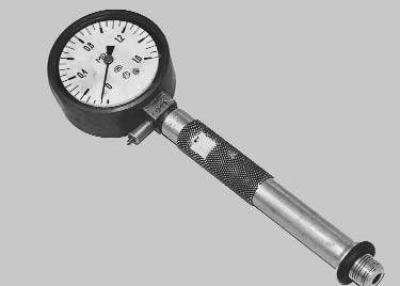
Note. This is what the compression gauge used to illustrate this book looks like. There are variants of compression meters that have a rubber tip instead of a threaded fitting for screwing in instead of a spark plug. Such compression gauges, when checking compression, are simply strongly pressed against the candle hole.
Attention! An important condition for the correctness of the readings when checking the compression is the serviceability of the starter and its electrical circuits, as well as the full charge of the battery.
1. Start the engine and warm it up to operating temperature.
2. Reduce the pressure in the engine power system (see «Reducing the pressure in the engine power system»). Do not install the fuel pump circuit fuse in the central mounting block.
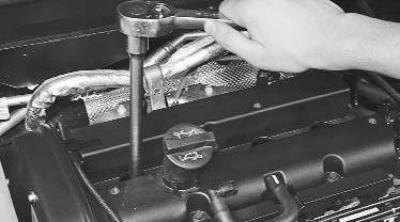
3. Remove wire ends from spark plugs and remove all spark plugs (see «Replacement and maintenance of spark plugs»).
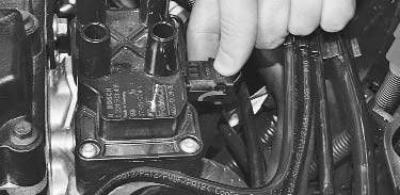
4. Disconnect the low voltage wire harness connector from the ignition coil, thereby disabling the ignition system.
Attention! Cranking the engine with a starter with the tips of the high-voltage wires disconnected and the ignition coil not disconnected can lead to breakdown of its high-voltage circuit.
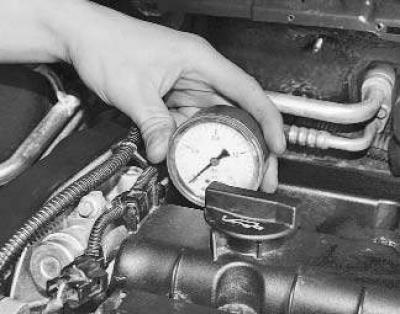
5. Screw a compression gauge into the spark plug hole of the cylinder being checked.
6. Press the accelerator pedal all the way so that when the crankshaft is turned by the starter, the throttle valve is fully opened in the engine cylinder purge mode.
7. Turn on the starter and turn the engine crankshaft with it until the pressure in the cylinder stops increasing. This corresponds to about four compression strokes.
Note. To obtain correct compression gauge readings, the crankshaft must rotate at a speed of 180–200 min-1 or higher, but not more than 350 min-1.
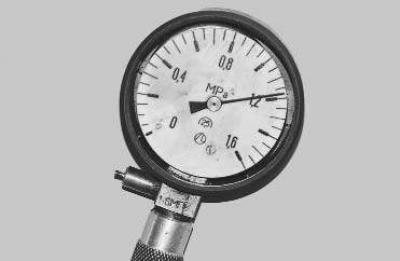
8. Having recorded the readings of the compression gauge..
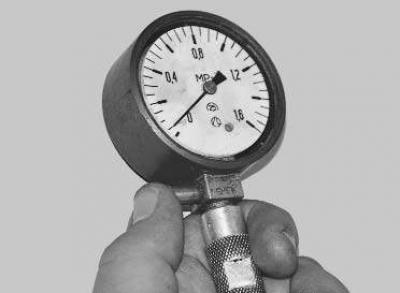
9.... set its arrow to zero by pressing the air release valve.
Note. For compression meters of a different design, readings can be reset in other ways (in accordance with the instructions for the device).
10. Repeat steps 5-9 for the rest of the cylinders. The pressure should not be lower than 1.0 MPa and should not differ in different cylinders by more than 0.1 MPa. Low compression in individual cylinders can result from loose valves in the seats, damaged cylinder head gaskets, broken or burnt piston rings. Low compression in all cylinders indicates worn piston rings.
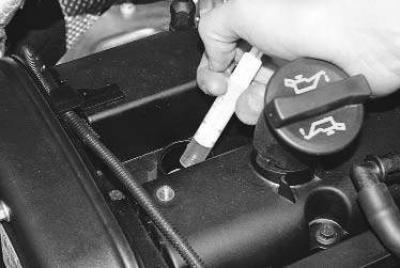
11. To find out the causes of insufficient compression, pour about 20 ml of clean engine oil into the cylinder with reduced compression and measure the compression again. If the readings of the compression gauge have increased, the most likely malfunction of the piston rings. If the compression remains unchanged, it means that the valve plates do not fit snugly against their seats or the cylinder head gasket is damaged.
Note. The cause of insufficient compression can also be found out by supplying compressed air to the cylinder in which the piston is previously set to TDC of the compression stroke. To do this, remove the tip from the compression gauge and attach the compressor hose to it. Insert the tip into the spark plug hole and inject air into the cylinder at a pressure of 0.2–0.3 MPa. To prevent the engine crankshaft from turning, engage a higher gear and brake the vehicle with the parking brake. Exit (a leak) air through the throttle assembly indicates a leak in the intake valve, and through the muffler - a leak in the exhaust valve. If the cylinder head gasket is damaged, air will escape through the expansion tank neck in the form of bubbles or into an adjacent cylinder, which is detected by a characteristic hissing sound.
Visitor comments